Are you near the city of Bodø during your trip through Norway? Then a visit to Saltstraumen is a must. This impressive tidal current, also known as a maelstrom, is located about 10 kilometers from Bodø, between the Saltenfjord and Skjerstadfjord. From the city center, it’s just a 30-minute drive by car.
Saltstraumen, the world’s strongest tidal current
Saltstraumen is known as the most powerful tidal current in the world and is truly spectacular to witness. Water rushes through the 150-meter-wide strait at an average speed of 7 knots. During a full moon, speeds can even reach 20 knots, which is about 37 kilometers per hour. This creates incredible natural force with massive whirlpools (maelstroms), especially at the moment the tide turns.
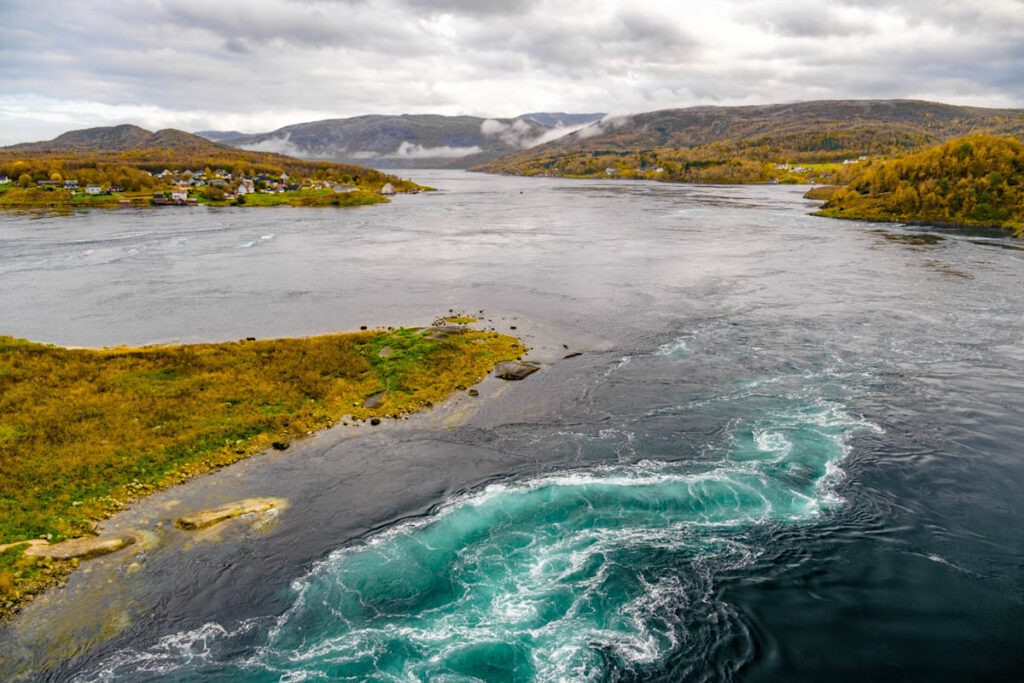
Best place to view the Saltstraumen
There are several spots along Saltstraumen where you can witness the spectacle. From the riverbanks, you’ll have a good view of the currents from different angles. However, the best ground-level view is right next to the bridge, at the location marked on Google Maps as Viewpoint Saltstraumen. Here, you can wander along the shores, which have a marshy feel and are dotted with charming, traditional Norwegian houses with grass roofs. The 41-meter-high, 768-meter-long Saltstraumen Bru looks impressive from this angle. But to truly appreciate the powerful currents (and especially the colors of the whirlpools) the view from the top of the bridge is unmatched. In my opinion, that’s the best place to fully experience Saltstraumen.
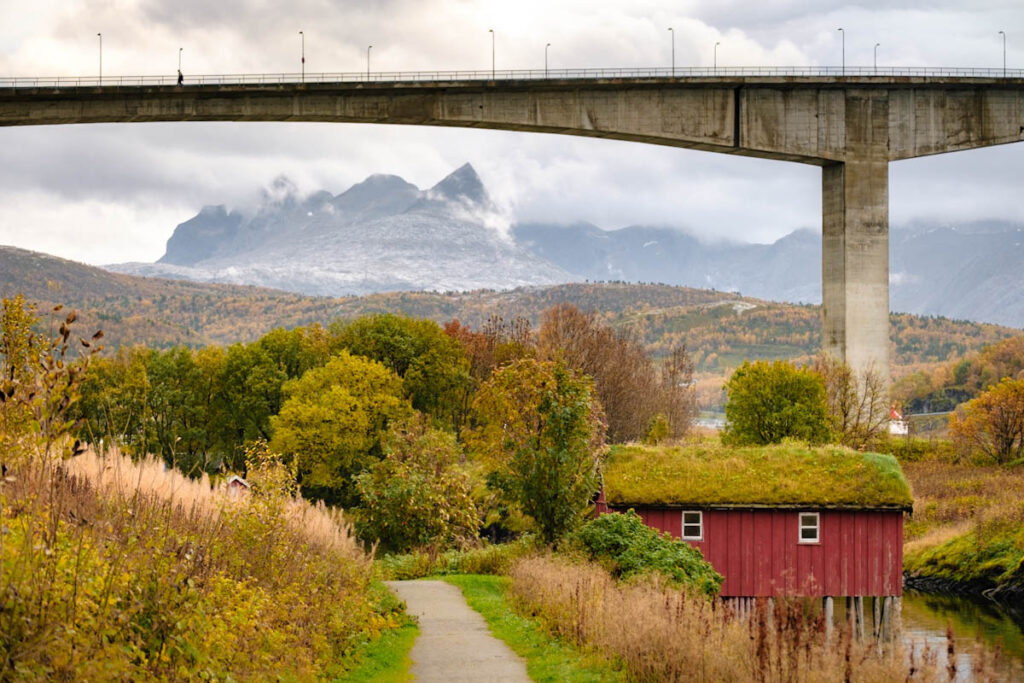
Which side of the bridge offers the best view of Saltstraumen?
Since there’s traffic on the bridge, you’ll need to decide which side you want to be on before walking up. It’s really not practical, or safe, to cross halfway. The guardrails are quite high and for good reason: traffic is frequent and moves fast. So it’s best to make your decision in advance.
Saltstraumen at high tide
At high tide, the best place to view Saltstraumen is from the south side of the bridge. During this time, the water flows toward Skjerstadfjorden and the whirlpools form on the southern side of the bridge (as seen on Google Maps). Don’t forget to walk all the way to the end of the bridge. The narrow stretch between the small island and the shore creates even stronger currents, resulting in stunning, clear blue water. At high tide, you can capture beautiful photos of the tidal current with the impressive Store Åselitind and surrounding mountains in the background.
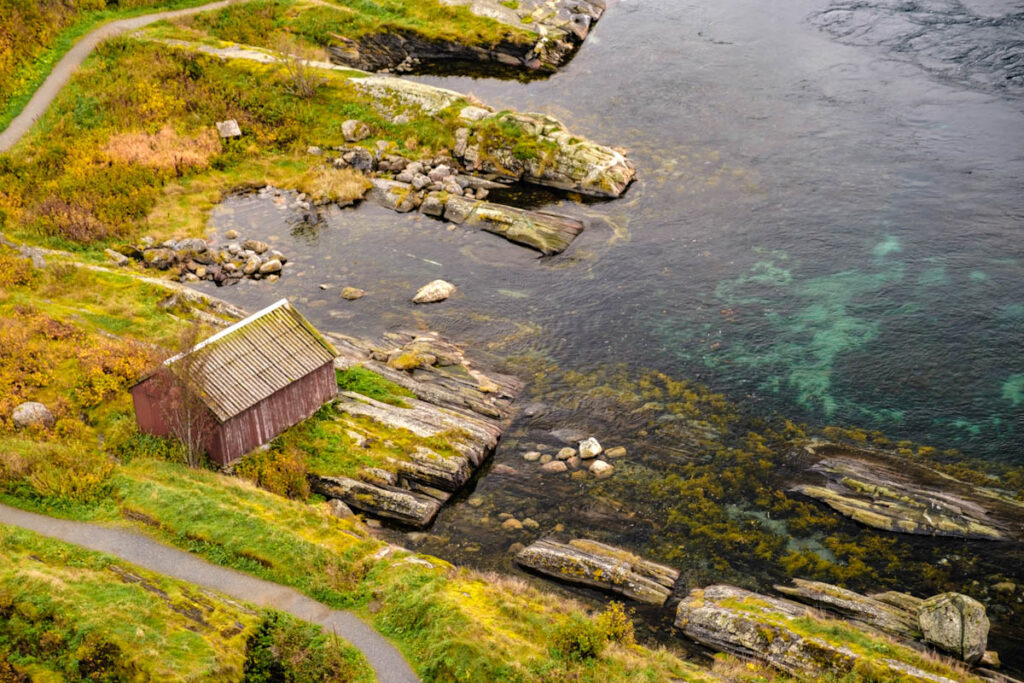
Saltstraumen at low tide
At low tide, it’s best to walk up the north side of the bridge. The water then flows from Skjerstadfjorden back into Saltenfjorden, making the powerful current most visible on the northern side of the bridge. If you’re taking photos at this time, the background might be a bit less dramatic; there are no mountain peaks visible in the distance on this side.
What’s the best time to photograph Saltstraumen?
As you might have guessed, I personally prefer photographing Saltstraumen at high tide, mainly because of the mountain backdrop. However, keep in mind how the sunlight affects your shots; assuming the sun is out, of course. The sun rises in the east and creates strong backlighting until early afternoon if the skies are clear. This isn’t an issue if you’re focusing on the water up close, but it might be a challenge for wide-angle shots. A polarizing filter can really help here, especially in the afternoon when the sun shines from the south. It reduces glare on the water and boosts contrast. Perfect if you’ve got dramatic clouds and a blue sky, but even on overcast days, a polarizer can make a big difference.
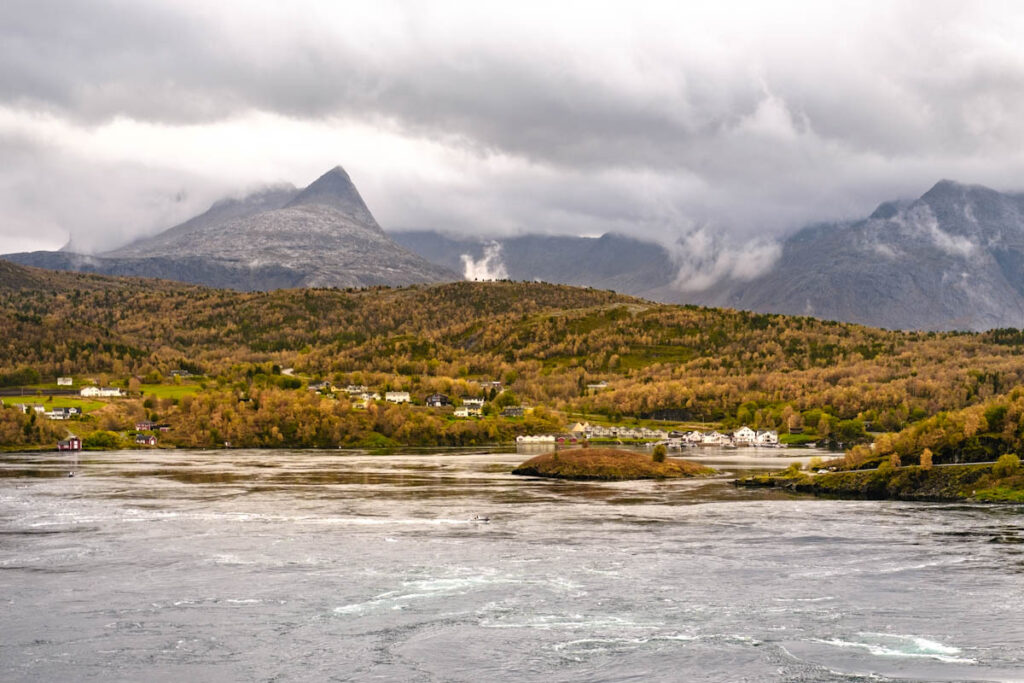
Saltstraumen activities; experience the tidal stream in a unique way
There are several ways to experience Saltstraumen. First, you can, just like I did, watch the tidal stream from the bridge or along the shore. However, you can also feel the power of the strong current firsthand by taking a trip in an RIB boat. The RIB safari is available for most of the year. Another option is a helicopter flight over Saltstraumen or a guided walk along its shores. Many activities depend on the weather and seasons; check available options here.
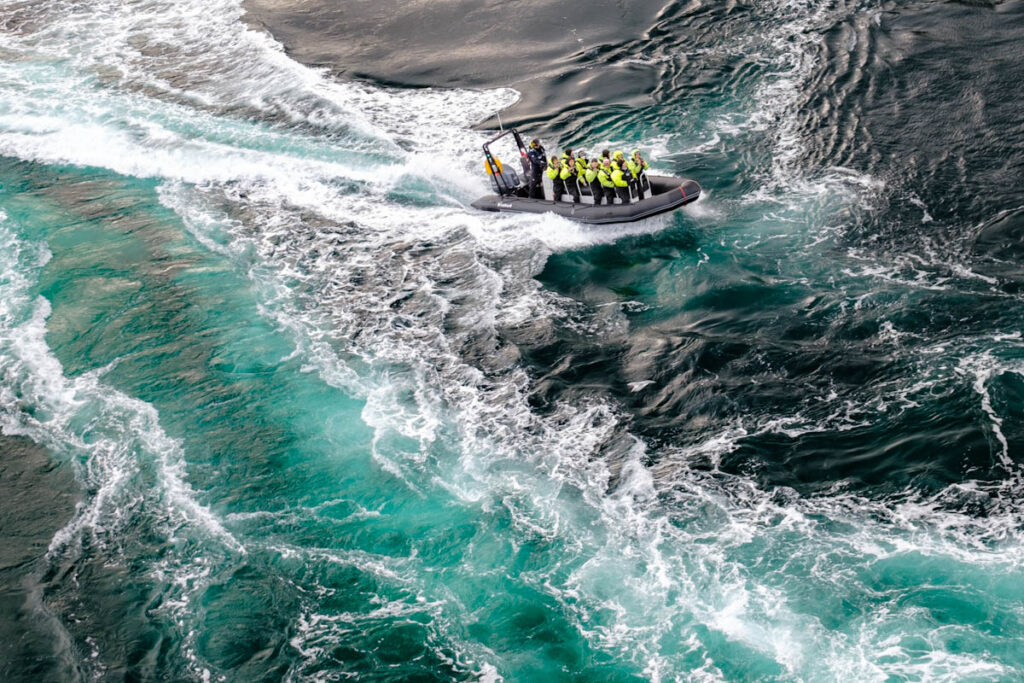
Check the tide table for Bodø before visiting Saltstraumen
Before visiting Saltstraumen, make sure to check the tide table for Bodø or the current Saltstraumen tide data. These websites clearly indicate when high and low tide occur. It’s important to know that the power and intensity of Saltstraumen are strongly influenced by the tides. By checking the tide table in advance, you can ensure you’re there at the right time.
I visit Saltstraumen when the tide is at its highest. It’s also almost a full moon, which means the current is nearly at its strongest. About half an hour after the peak, the flow drastically weakens and soon after, I can already see the water along the shore starting to move in the opposite direction. It’s never boring at Saltstraumen! But if you want to witness this natural phenomenon in all its glory, it’s best to be there right at the peak of high tide or the lowest point of low tide.
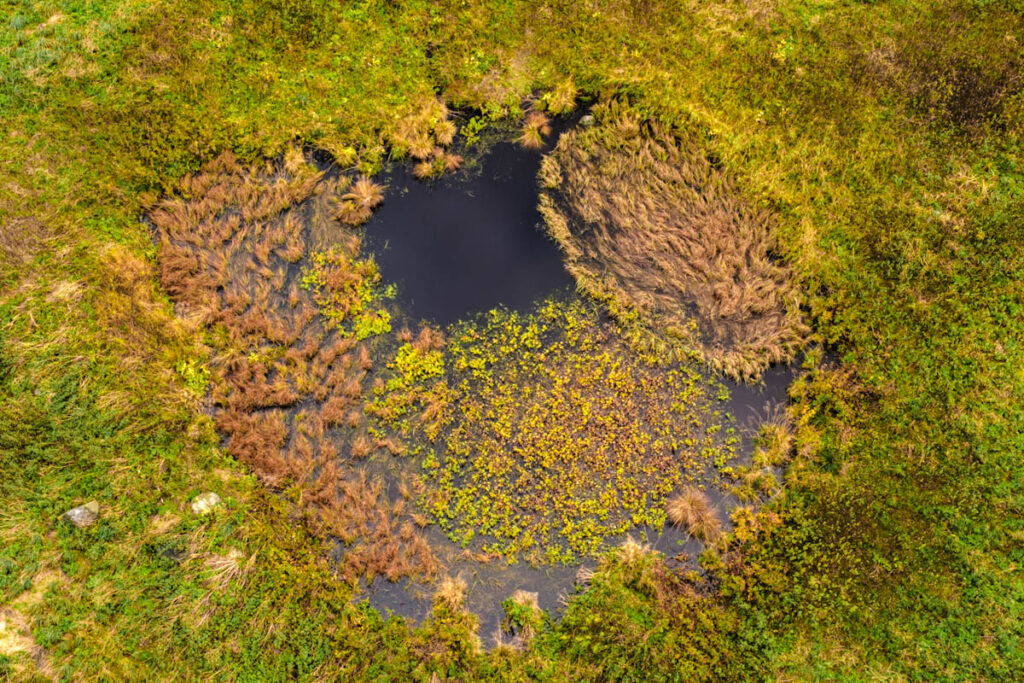
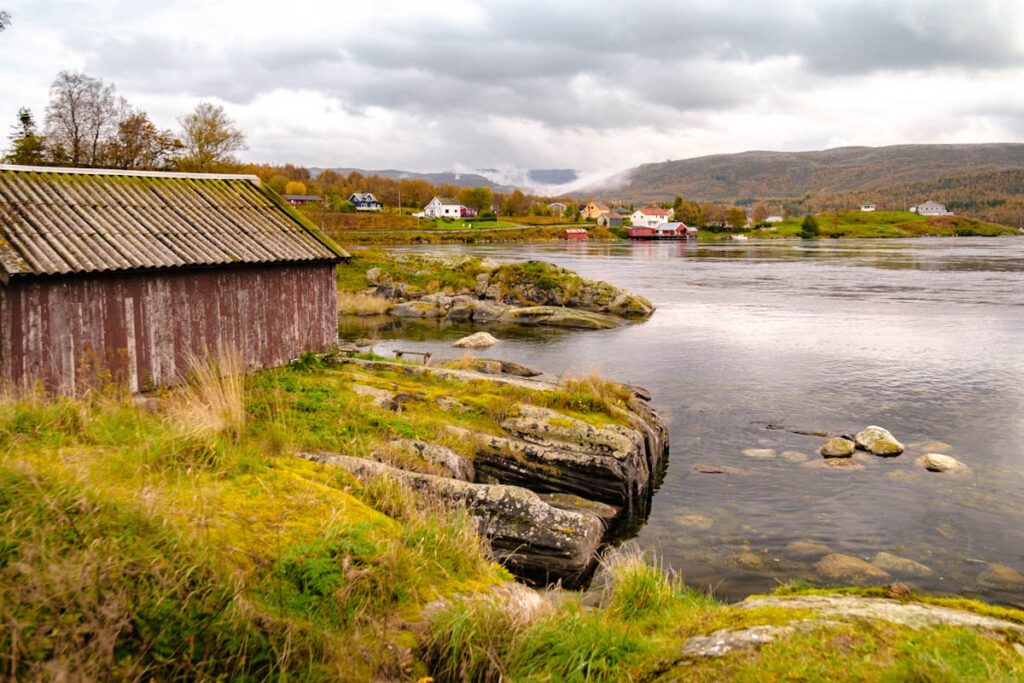
How to get to Saltstraumen
The best way to reach Saltstraumen is by car. Fly to Bodø, pick up your rental car there and drive to Saltstraumen. Are you taking the ferry from Bodø to the Lofoten Islands? Or are you driving from Bodø to the Lofoten via Bognes, like we did? In that case, it’s definitely worth adding Saltstraumen to the beginning or end of your trip.
Parking at Saltstraumen
You can park your car at the start of the bridge; on Google Maps, this is marked as Saltstraumen parking. At the end of September, when I visit, there’s plenty of space available. During the high season, however, it might be a lot busier. If there’s no space, you might be able to park at the Saltstraumen Hotel. From there, you can enjoy a short walk along the water towards the bridge. We park across from Pluscamp Saltstraumen Camping, although I’m not sure if that’s possible in peak season.
Renting a car in Norway for your visit to Saltstraumen
Renting a car is the best way to explore Norway at your own pace, including a visit to Saltstraumen. When booking your rental, make sure to choose a company that offers a comprehensive insurance package. An all-inclusive policy gives peace of mind, especially if it covers things like damage, theft and reimbursement of your deductible, even in case of an accident that’s your own fault. This way, you can enjoy your road trip through Norway without having to worry about unexpected costs.
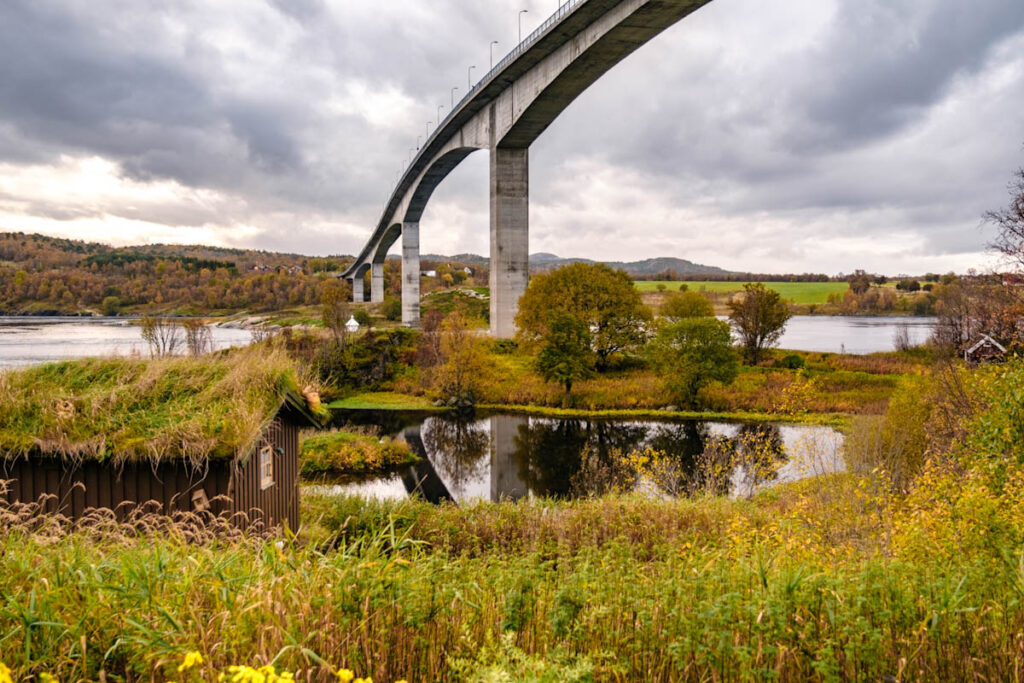
Staying near Saltstraumen
Saltstraumen is best known for its powerful tidal current, but it’s also a favorite spot for northern lights sightings, thanks to the minimal light pollution in the area. If you’d like to witness the impressive current both at high and low tide and want to be in a prime location should the Aurora Borealis appear, Saltstraumen Hotel is a convenient place to stay. If you’re looking for something a bit more basic, there are cabins available at the nearby Saltstraumen Hotels Hytter. You’ll also find several holiday homes and cottages for rent in the surrounding area.
Other things to see and do in (and around) Bodø
There’s much more to explore in and around Bodø. South of the city lies Saltfjellet-Svartisen National Park, where you can hike through forested valleys with dramatic mountain backdrops and glaciers in the distance. From Bodø, you can take the ferry to Moskenes on the Lofoten Islands, an archipelago known for its stunning scenery, quaint fishing villages and postcard-perfect beaches. Driving from Bodø to the Lofoten by car is also very doable and doesn’t take much longer. Mjelle Beach is a beautiful stretch of sand that glows pink under certain lighting conditions, a peaceful spot to watch the sunset. Even more unique is Hovdsundet Beach, a breathtaking white beach located between the mainland and a small island, with water on both sides. And if you’re in the mood for a toilet break with a view, don’t miss Ureddplassen, dubbed the most beautiful toilet building in Norway. It’s located along the scenic route Helgelandskysten (Fv17) to the south; definitely worth a stop if you want to enjoy a stunning view while taking a break!
